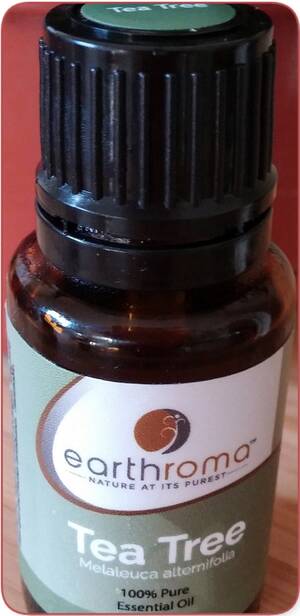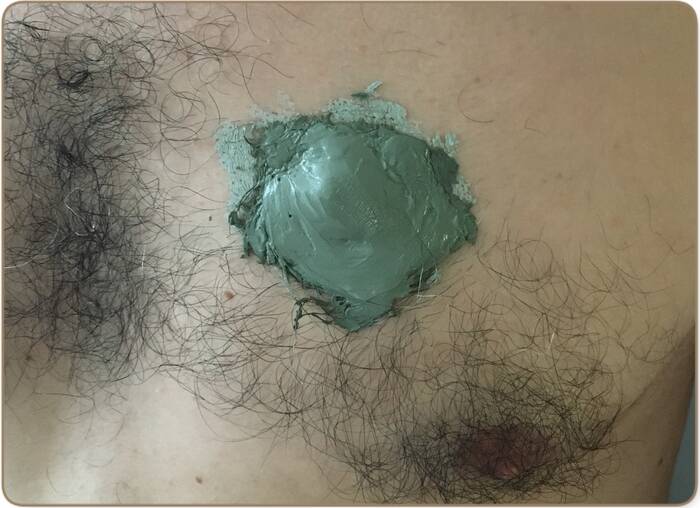How to apply the bentonite clay for cysts? Is it effective in relieving and reducing the effect of cysts? How you can soften a cyst? And finally, how to Bring a Cyst to a head fast with other natural remedies?
I. Brief Reminder of the Different Types of Cysts
1. The Ovarian Cyst:
The ovarian cyst is a swelling, a lump that appears in the ovaries. This sac is full of liquid. In most cases, the ovarian cyst is benign.
Less than 10% of women are affected by this anomaly, which may in some cases require treatment.
This is the case if the cyst is accompanied by pelvic pain, bleeding outside the period (metrorrhagia), or digestive problems.
In these cases, various treatments can be implemented.
2. Mammary Cyst:
Like the ovarian cyst, the breast cyst is generally harmless. Still called a breast cyst, it is a hollow that is located on the mammary glands and contains fluid.
It can vary in size and even shape and can develop on one or both breasts.
A breast cyst is diagnosed by touch. It is mobile, and can even grow and become painful as menstruation approaches.
The breast cyst goes away on its own after a while, but sometimes it may need to be removed.
3. Synovial Cyst:
The synovial cyst is also known as a ganglion cyst. This mass is a growth that appears in the joints or tendons.
The synovial cyst gets its name from the synovial fluid, which lubricates joints and tendons. Repetitive or unusual movements can cause an excess of synovial fluid. This excess fluid swells and forms a lump, which is the synovial cyst.
There are treatments to get rid of a synovial cyst. But when it appears without reason, it often disappears by itself after about 6 months.
Puncture is a technique that is not always recommended, mainly because of the danger of infection. However, traumatic cysts and exeresis can be considered.
This removal of the cyst is applied in cases of recurrence of the cyst and pain and is done under local anesthesia.
4. Pilonidal Cyst:
The pilonidal cyst is found in the gluteal groove or coccyx.
Although we do not know exactly what causes the appearance of this cyst, certain elements favor it. These include obesity, a large amount of hair or even sitting for too long.
Affecting men much more than women, this cyst appears as a lump in the area of the gluteal fold.
Pilonidal cysts are usually not painful, but pus or blood may develop in the area. The cyst may also be accompanied by a fever.
In these cases, it is called a pilonidal cyst infection and a doctor should be contacted.
5. Sebaceous Hyperplasia
Sebaceous hyperplasia is a fairly common skin condition that causes small bumps on the skin.
These bumps can be smooth, or irregular, and sometimes coarse. Generally, they are a color that tends to be yellow. Their size varies
The main cause is that sebaceous glands are sometimes damaged and thus dilate and clog.
They then turn into soft or hard bumps, with a kind of crater in their center.
II. How to Apply the Bentonite Clay Poultice on a Cyst
1. How Bentonite Clay Acts on Cysts
The properties of bentonite clay are numerous. On cysts, you can count on their anti-inflammatory, absorbing, and nourishing properties.
Bentonite clay is absorbent, and even more so, it is adsorbent. It is thus capable of draining water and toxins from the body. Attached to the skin, bentonite clay cleanses the blood of its impurities and waste products. This will help the swelling to decrease.
The anti-inflammatory properties of bentonite clay will help relieve the pain associated with the cyst.
In addition, bentonite clay is nourishing and full of minerals. In cases of a pilonidal cyst, it will help heal the tissue.
2. How to Use Bentonite Clay to Relieve Cysts
Making bentonite clay poultice is a natural way to treat your cyst.
In the case of a pilonidal cyst, which can ooze, you should use the clay with a compress. This will avoid putting the clay directly in contact with your body.
To begin, fold a sterile non-woven compress in half so that it is thick. The size of the compress should be able to completely cover your pilonidal cyst.
On the side, put your clay paste, which you will have obtained by mixing clay with water. You can use your fingers or a wooden spoon, but nothing metallic.
Use a second compress, this time not folded in half, and place it on the clay area.
When you apply the compress, make sure that the double-thickness area is the one in contact with your skin.
This poultice should work for one hour, and once or twice a day. With the help of a sterile ergonomic bandage, you will maintain your poultice and avoid getting dirty.
Once the poultice is removed, cleanse the area with saline solution. Tea tree oil can also be used to rinse the gluteal fold
For sebaceous cysts, the method is much the same.
A compress may or may not be used in this case. Mix clay powder and water and put 2 to 3 cm of the paste on the affected area.
One hour is the ideal time to apply the paste.
NB: repeat this application of clay until the cyst disappears or at least until the pain it causes disappears on its own. This is the best way to use bentonite clay for cysts.
3. Bentonite Clay Dangers
There are almost no significant contraindications to using bentonite clay on the skin unless you are allergic to this natural product, which is very rare.
Or if the clay is not of good quality or is contaminated by toxic substances, which often happens when it comes from a dubious origin.
III. How to Bring a Cyst to a Head Fast with Other Natural Remedies
1. Tea Tree Oil to Treat Cysts

Tea tree essential oil offers tremendous benefits for treating cysts.
To make the best use of it, all you need to do is apply it to the cyst twice a day. Rub tea tree essential oil on your skin as often as necessary to see your cysts disappear.
Once it has permeated your skin, you will feel a soothing sensation of warmth. You can take advantage of its anti-inflammatory effect to feel relieved.
2. Hot Water Bottles
The simplest ideas are often the best.
Hot water bottles are very effective against cysts. The heat acts on the cysts, reducing their size and inflammation.
If you don’t have a hot water bottle, don’t hesitate to use a warm compress with a towel instead. The heat applied to your skin will reduce the cyst and speed up your healing.
However, avoid doing this for more than 30 minutes.
3. Apple Cider Vinegar for Softening a Cyst
To use cider vinegar to soften or get rid of your cysts, simply soak a little on a compress. You can also do it with absorbent cotton, before applying it to your cyst.
Do this as often as you can during the day.
For ovarian cysts, cider vinegar is more effective when drunk.
In a glass of warm water, add one tablespoon of cider vinegar and one of the black molasses. Drink one glass of this drink in the morning and another in the evening.
Not only will the cider vinegar reduce the size of your cyst, but it will also relieve burning and itching.
Choose an organic cider vinegar, whose qualities will be even better.
Useful Links:
Bentonite clay: 11 benefits and uses
